The Science of Unconscious Bias: What, Why, & How

A growing body of psychology research points to an uncomfortable truth about decision making: unconscious bias influences all of us and even the simplest decisions we make. Whether it’s our level of hunger, the time of day, or our mood, there are quite a few internal and external factors that creep into our decision making equation without our permission or awareness – and quite literally change our minds.
The research is equally amazing and alarming. If the people whose job it is to decide on inmates’ parole and students’ college admissions are biased by unrelated factors and they don’t even know it, how can we protect our own decisions from unwanted influence?
The first step is to understand the most common forms of bias that everyone experiences but hardly anyone recognizes. And the next step is to employ specific strategies to protect ourselves against making faulty, biased decisions unwittingly.
Let’s start by looking at the fascinating psychology research into unconscious bias that proves just how prevalent it is. Warning: it’s kind of scary.
Prisoners’ Parole Applications: A Shocking Example of Unconscious Bias
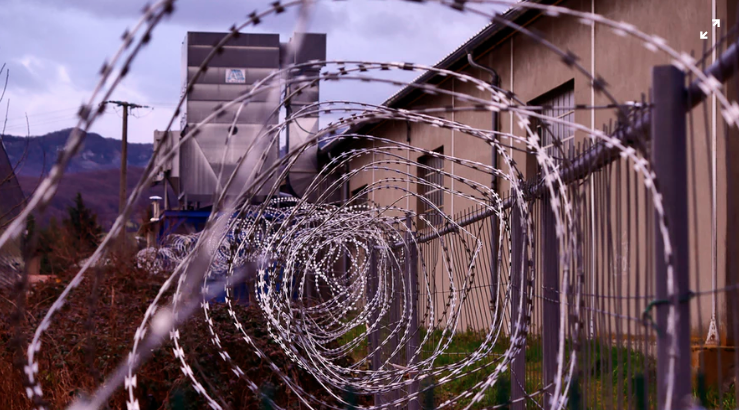
Are Israeli courtrooms biased against Palestinians? That’s one of many possibilities a team of researchers in Israel considered as they looked for patterns in the granting of parole. And they found a pattern all right, but not the one anyone expected. What made the biggest difference was the part of the session when the committees’ decided on each case. That’s right. The decision of whether someone should stay locked up, or go free, largely came down to a factor that had nothing to do with the case itself.
Let that marinade for a minute.
It’s pretty messed up, huh? I could hardly believe it. But it’s true. The committees were far less likely to grant parole toward the end of a session, most likely the result of what’s known as decision making fatigue. There are many factors that go into the decision of whether or not to grant parole; it’s a complex decision that takes into account the crime, time served, and other circumstances. As the session goes on and they hear multiple cases, the committee members get tired, and as they do, the fatigue makes them increasingly likely to stick with the status quo, which in this case meant denying parole applications. But this all happened without them knowing that anything but the facts at hand had influenced their decisions.
That’s unconscious bias at work.
You can read more about the research here.
A similar study in the United States found that the time of day when admissions officers read a high school applicants’ essay played an outsized role in how they scored it. It’s scary that a decision so important like a prisoner’s parole or a student’s college admission could be influenced by something so random, right? But that is the power of unconscious bias on decision making, and the same phenomenon impacts every one of us as we make all types of decisions. We’re often biased in ways that we’re not even aware of.
To understand the extent to which we are all biased, consider this study from the University of Virginia on hunger and visual perception. It turns out that what we see isn’t always very accurate.
How Big Is That Hill? Unconscious Bias and Getting Hangry
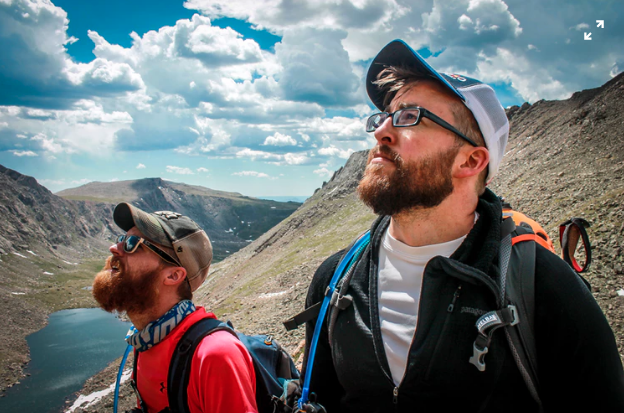
Imagine that you have a group of people at the bottom of a hill. If you came up with some way for them to describe the size of the hill, they would probably all say something similar, right? They are, after all, staring at the same exact hill, and it is a specific size. But actually that’s not how it works. Everyone’s perception of the hill is different based on the resources each person has to climb it at that moment.
In a research study at the University of Virginia, researchers divided participants into groups based on the amount of glucose they were given before rating the difficulty of climbing the hill. The presence or absence of glucose, a simple sugar and the body’s preferred fuel for physical exertion, determined how big the hill seemed for each person. The more glucose they had, the smaller the hill seemed. The less glucose, the bigger the hill. Now how could this be?
It really comes down to the fact that the brain is more concerned with survival than objectivity. To our brains, it’s less important how big the hill actually is and more important how big it is relative to our resources. On a very basic, biological level, we all experience the world through biased lenses. Our brains are biased to ensure our survival above all else, even the truth.
Research into hunger more generally has found that it tends to amplify the negativity of a negative experience. This is the experience commonly known as hanger – hunger driven anger. I’d speculate that the same forces are at play here. Since we have less resources to deal with the negative stimulus, it seems more overwhelming, and just plain worse.
And in a very similar way to the judges in Israel and the admissions officers in the US, the group at the bottom of the hill or someone who is hungry isn’t aware that the amount of glucose in their blood is impacting its perceptions of the world, and as a result, its decision making. But it is – in a very real, measurable way. That’s unconscious bias at work.
So fatigue and hunger are two forms of unconscious bias. And the last one I want to look at, and it’s probably the hardest to perceive and guard against because it’s changing all the time, is our mood.
You Don’t See That? Unconscious Bias and Mood Goggles

Of all the stimulus that comes upon our eyes, ears and noses every day, we consciously take in about 1% of it. We’re always filtering; we have to. But the crazy part is, we tend to notice things that match the way we’re already feeling. Our brains like certainty, to know what’s going on. So when we’re anxious, we’re more likely to see threats. When we feel serene, we’re more likely to see evidence that the world is wonderful. The result is that the way we’re already feeling is reinforced – again and again. As I have struggled with depression over the years, I have felt the extreme of this tendency: When you are depressed, you see obstacles and hopelessness all around.
And what’s more is that these feelings, just like the physical sensation of hunger, impact our decision making in a big way. Fear breeds uncertainty and a limited perspective. Anger instills confidence and a greater tolerance for risk than normal. Sadness tends to make people more analytical. Even happiness has been found to make people more gullible. If we’re not aware of these biases, we can make some really suboptimal decisions. Our mood changes and we think, “Gee, why didn’t I analyze that more carefully? Or why did I over analyze that situation to death?”
Have you ever made a decision that you could clearly see in retrospect had been influenced by your mood? If so, share it in the comments below.
So considering all this, how can we be sure that we’re not making biased decisions?
5 Ways to Overcome Unconscious Bias
Unconscious bias exists for all of us, so what can we do to overcome this limitation and make optimal decisions?
There is no surefire way, but here are 5 steps to go through and check for your own unconscious biases:
1. Check your basic needs. Am I hungry? Thirsty? Tired? Do I need to go to the bathroom? And you can not only think about if these things are true, but also think about how they would impact the decisions you’re making if they were. If I am hungry or tired, for instance, and a coworker asks me to take on an extra project, how would that influence my thinking as I go to respond? The answer to this one is clear: Hunger and fatigue mean that I don’t have the resources, and I would be more likely to decline or feel overwhelmed. Which is fine unless you think about how easy those are to change, and then I may want to hold off for a couple hours, or days, before responding. So be sure to check your basic needs before making almost any type of decision.
2. Take your emotional temperature. Ask yourself, what am I feeling? And how would that impact the decision I am making? Write down your feeling and compare it to the research on how that may influence your decision making progress. In today’s technological age, when sending what my Dad calls ‘email missiles’ is easier and more common than ever, this is a really vital skill. I am angry, and that could make me overconfident and minimize the risk I am taking by doing this. Or more often for me, I am sad and that could make me overanalyze a decision, even one as simple as how to word a text message. Recognizing these patterns before you make the decision is a game changer.
3. Consider big decisions in several sittings. Since fatigue, mood, hunger, the time of day, and even the lighting in a room have all been found to influence our decisions, it’s probably best to think about big decisions at several different times and in different locations. That way you can be sure that you are looking at it from several different angles, and sort of hedging your bets against making a biased decision.
4. Pretend to be someone else. A growing body of research shows that one way we’re unconsciously biased is in reserving wise reasoning for others’ problems that we do not apply to our own. It’s known as Solomon’s Paradox. For more on this, I highly recommend this article. To combat this trend, look at your own problems from a third-person perspective, like you are looking in on your own life. It may unearth some previously undiscovered biases in how you are thinking about the situation. For this to be effective, you should take care of you basic needs first, or you may think your friend’s situation is worse than it is!
5. Travel forward in time. Similarly, we often make decisions based on restraints and pressures related to time. So next time you are making a big decision, ask yourself: How would I feel about this in 5, 10 or 15 years? Thinking far into the future can help eliminate some unconscious bias and help us connect the decision to what really matters to us.
What’s new in emotional intelligence?
Voices from the Network: Huong Nguyen
This month we sit down with Ms. Huong Nguyen, a medical doctor and certified EQ Coach, EQ Facilitator, Practitioner and Assessor who has been working to expand her local EQ community in Vietnam.
Voices form the Network: Jacqui Butler & Svetlana Suvorova
When Jacqui Butler and Svetlana Suvorova met in Six Seconds’ EQ Coach Certification program in 2022, they clicked right away. After building a strong connection of mutual support and collaboration, they recently launched a joint venture, LeadEQ, to support women leaders. This is their story of finding EQ, each other, and a deeply meaningful path of professional growth.
Voices from the Network : Pamela Chng & Suyin Tay
Today we talk to Pamela Chng and Suyin Tay, two social entrepreneurs based in Singapore who run Bettr Coffee, and its nonprofit affiliate, Bettr Lives, a Six Seconds Preferred Partner.
The Neuroscience of Change: How to Make New Year’s Resolutions Stick
Why do New Year’s resolutions nearly always fail? And what can we do to make them stick? Explore the neuroscience of change and motivation.
Voices from the Network: Liliana Rodríguez
This month we’re sharing the story of Liliana Rodríguez, an emotional intelligence consultant and coach based in Monterrey, Mexico.
Emotional Insights for Leaders: Apathy and How to Move Through It
In this Emotional Insights for Leaders, we look at an emotion that typically blocks progress but can also spark progress: Apathy.
- Pursue Noble Goals in the Six Seconds Model of EQ - July 29, 2023
- Increase Empathy in the Six Seconds Model of EQ - July 26, 2023
- Exercise Optimism - July 24, 2023

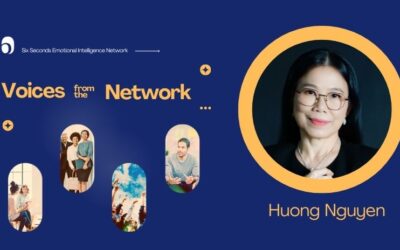
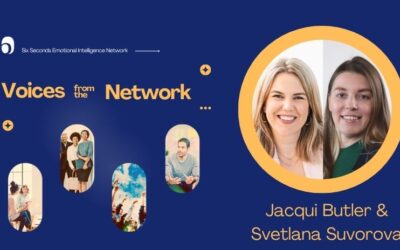
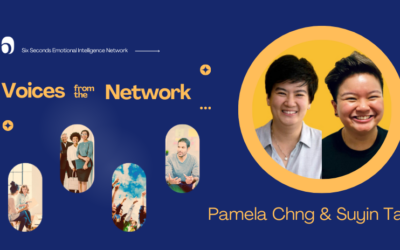

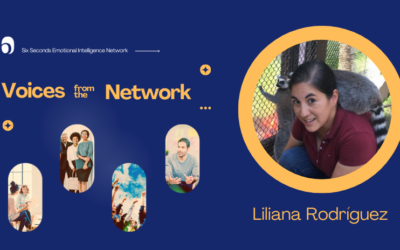


Great article, Michael! This research dovetails beautifully with an area of great interest to me: law of attraction concepts and practices, through the unfolding of leading-edge discussions with Esther Abraham Hicks (via YouTube.) I love how this research underscores the understanding that we live in an attraction-based energetic universe, that like energies attract. It’s the how and the why we will always manifest experiences to reinforce our bias, our beliefs.
Every belief is a vibration. The question is, are we biased positively or negatively? And what is that positive or negative in relation to?
According to law of attraction principles, emotions fall on an energetic scale similar to frequencies on a radio tuner. Depression and despair at the bottom, appreciation and joy at the top. We are both the tuner of incoming radio frequencies–we receive frequencies–and we are transmitters, putting out vibrations. Most of the time unconsciously. And most of the time, we live in an echo chamber, receiving and transmitting back the conditions we perceive around us through our senses. Understood this way, emotions can be seen to serve as an internal guidance system to indicate being in alignment (+) or out of alignment/resistant (-).
The exciting thing: people are discovering we can learn to broadcast only the highest good, regardless of the conditions. And that is a big deal!
Picture a river flowing swiftly. Call it chi, ki, prana, grace, the eagle’s emanations, or all-that-is. When we are at the surface which is flowing 24/7 like a river, it feels good. Easy. Fun. Effortless. When we are out of alignment, we are resisting the current, and that feels bad. Like trying to swim upstream. Resistance is hard work. Resistance also pulls us down below the surface of stream, especially when we look backwards and hold on to grievances and fears. We get dragged right down towards the dark, resistant emotions.
When we are in a state of non-resistance, we float up like a cork, and become receivers of pure positive energy and a million cooperative components of the universe conspiring to help us. IT is because we have the leverage of the flow of source.
When we understand how law of attraction works, negative emotions become helpful indicators of misalignment, or resistance. We come to appreciate them as speed bumps at the edge of the highway. That appreciation itself brings us back up into alignment!
Negative emotions become not something to despair over, but valuable information to help us steer ourselves back up into the stream, in the flow. Becoming aware of and caring about our emotions, practicing shifting our emotional state deliberately to better-feeling, more positive vibrations, we can become conscious attractors, allowers, creators. That’s what law of attraction is all about.
This research also dovetails with all the great spiritual traditions as well. It explains why addicts hit rock bottom and then come back up: it is when we surrender, let go, trust, have faith, and release resistance — that we naturally float back up like corks, into the stream.
Reading this article, I feel quite heartened. Understanding from many different angles is coming to light at just the right time. As with all great advances throughout history, it is yet another turn of the upward spiral in the evolution in consciousness.
It has long been said that “hearts [emotions] that seek God [good] find him.” And that when one individual masters unconditional alignment with Source, they positively affect the vibration of 1,000 others around them. That would be interesting to study and document. I recently have been meeting people who are quite good at being in alignment unconditionally, and have witnessed their affect upon others.
Thanks for this article.
Great article, and resonates with me as a coach and teacher. When training teachers, I often recognise they are displaying unconscious bias that means their expectations of children and young people are limited. Developing their EQ can help them to recognise this and move towards adopting a more compassionate and egalitarian outlook for the children they teach.
Yes!
That’s very interesting, Ruth. Thanks for sharing. A great coach can really help by making visible these forms of unconscious bias that are hard to see by oneself. What are the limiting beliefs that you often see teachers having about children?
It all starts with self awareness and ends with the choices we make. Great scientific insight very similar to the one practiced in CQ. EQ is so simple to understand, great to teach and hardest to apply. Yet, like life itself, it unravels only when we accept it.
Hi Rishabh,thanks for sharing. I agree that it all starts with self-awareness and acceptance, and really comes down to our choices. What is CQ?
Wonderful article with crucial insights for Self-Awareness and how it relates with our decision making. We really become a victim to our Unconscious Bias, especially in more demanding situations when we are challenged by mounting stress, hunger etc. Thanks Miller for bringing a very important aspect of decision making to our focus.
Thank you, Tauquir! You make a good point that unconscious bias and its effects seem to worsen – or sort of come to light – in demanding situations. As always, thanks for your support and insight!
Thanks for this important article. In these fractured times, disseminating the research is especially important!
No problem, Annette! I agree that it’s especially important these days. Thanks for reading and sharing!
Hi Annette, thank you! I enjoyed writing and sharing it, and you’re right, it’s very needed these days